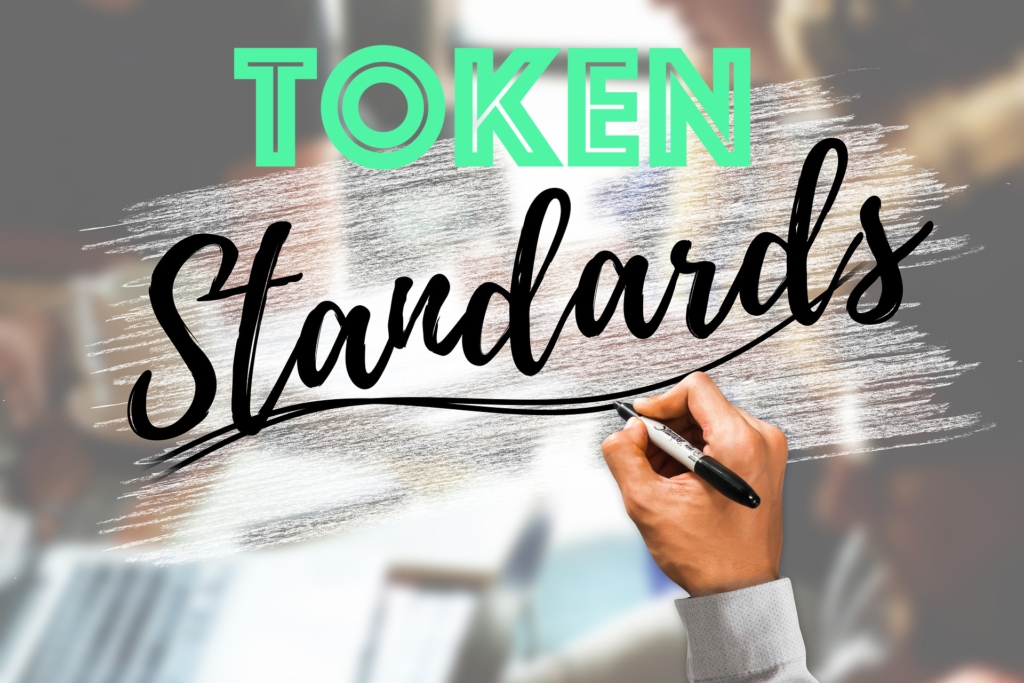
Security token standards look quite complicated from the outside. In this post, we are going to learn why they are important, when they should be defined, what to look for in order to choose the right token standard for your project and demystify complex terms such as ERC-20, ERC-1411, and more. No knowledge required.
Why token standards?
Standards generally allow people and companies to agree on some formality or structure of something. In the case of a token, this means that specific token standards contain different functionalities – some of them are mandatory and some are optional.
The fact that a part of the functionality is mandatory allows other stakeholders to integrate a token into their own platform. If you are issuing a token and follow a specific standard, an exchange, for example, knows which methods it needs to use and how they can integrate the token into their exchange. If you do not follow a token standard, this would be much more complicated for the exchange – which makes being listed much more unlikely as well with the more manual effort needed.
What to look for in a token standard
It is very important to choose the right token standard at the beginning, since portability issues can be difficult to sort out later. The following criteria should be considered when doing so:
- Compatibility
As mentioned above, a token standard is an agreement on a certain structure of a token. Hence, compatibility to different external stakeholders should be given – the more, the better. A token standard can be attractive if it is compatible with many:
- issuing platforms
- exchanges and secondary markets
- wallets, portfolio management services and user interfaces
- Compliance adaptability
A token standard should provide the necessary functionality to ensure Compliance. Usually, it is not possible to allow the transfer of a security token to everybody. Instead, people who want to receive the e.g. equity token would need to be verified before. This must be implemented into the token so that if an unauthorized token transfer is about to happen, it can automatically be prevented.
- Legal Frameworks
Although this is not the case yet at the time of writing, Regulators in the future may include or at least favor certain token standards to comply with the Regulation. If the regulator, for example, is familiar with the ERC-223 standard, obtaining approvals and collaborating with the legal stakeholders can be a lot easier and save costs.
- Interoperability
Some token standards are compatible with others and even with other Blockchain platforms. For example, a token standard that has the same methods as another one, but only *adds* some functionality, is backward-compatible. Furthermore, some tokens are compatible between the EOS and the Ethereum Blockchain – if exchanges later on either focus on Ethereum or EOS based assets, your token is compatible with both.
Token Standards on the Blockchain: Which standards exist for security tokens
Important to mention is that most token standards are bound to a specific Blockchain, although some of them are interoperable. Ethereum, undoubtedly, is the most popular Blockchain platform at the moment (2019). Hence, we are going to look at a few standards based on Ethereum. For further information, secure your copy of the book “Assets on Blockchain” on Amazon.
ERC-20: The simplest version of Ethereum tokens
ERC-20 is the most popular token standard on the Ethereum Blockchain.
It is the simplest form of an Ethereum token, consisting of functions for transfers, checking the token balance and a few variables. Hence, it is good for the very basic functionality, but the token is not tailored to the use for security tokens.
ERC-223: The better version of ERC-20
This standard is an advanced version of the ERC-20 standard that prevents users to send money to unused wallet addresses. Hence, it only improves the predecessor ERC-20 and is backward-compatible.
ERC-1400: The basic Security Token Standard
ERC-1400 is, in contrast to the standards depicted above, specifically designed for security tokens and more like a family of different token standards classified under it. Each of them provides different functionality for different use-cases that are described in detail in Assets on Blockchain.
ERC-1404: Simple Restricted Token Standard
This standard is really important since it provides the ability to restrict token transfers. As said, oftentimes a token transfer is bound to conditions (e.g. the receiver is a verified person). With the ERC-1404 standard, such restrictions can directly be programmed into the token. Hence, transferring a token to an unverified wallet address on the Blockchain can be fully prohibited.
How to choose the token standard
Reading many different numbers of different token standards with different functionality seems very complicated. This article rather aims for an overview of why token standards matter and what to look for when choosing one. Taking this as a start, you can dive deeper into specific details of token standards. In my book, I am describing the relevant standards on the market for security tokens in detail.
As mentioned above, the criteria can be:
- Compatibility
- Compliance adaptability
- Legal Frameworks
- Interoperability
Want to get started? Consult the Max Kops team now, ask your question and claim your free Consulting session. Otherwise, make sure to subscribe and let me inform you about new content.

Assets on Blockchain is the standard books on security token offerings (STOs) and how the financial world will be disrupted by Blockchain.
